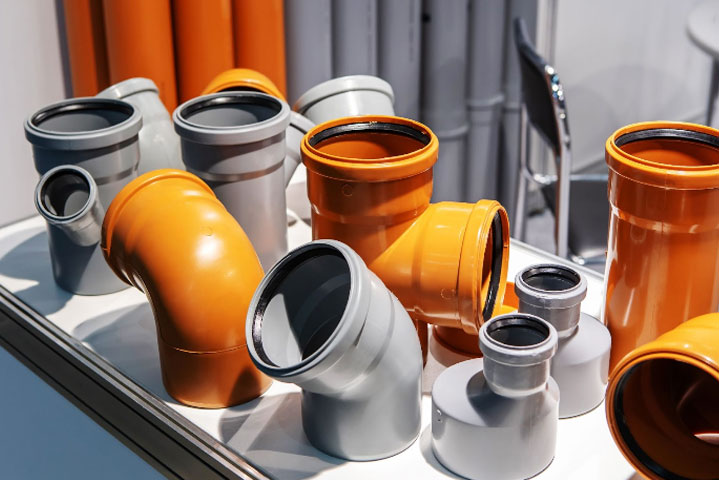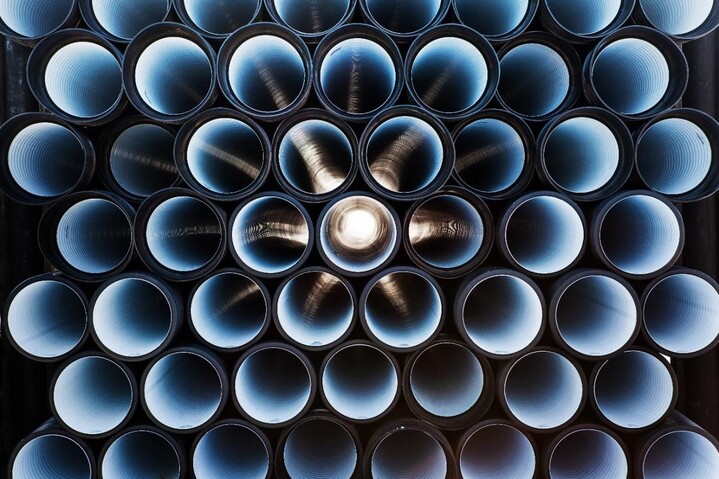Looking back a few decades, plastic-based pipes have quickly become the preferred choice for various plumbing applications. One of the standout varieties of plastic pipes and fittings is Polyvinyl Chloride.
Additionally, PVC pipes are further available in different variants, out of which, CPVC and UPVC are two of the most widely used types of plastic pipes. While all variants of PVC pipes inherit the excellent characteristics of the PVC material, the unique process of manufacturing different types of PVC materials contributes to some unique features.
Over the years, UPVC and CPVC-based pipelines have been used for a number of common applications including the supply of water for households, and commercial, agricultural, and industrial purposes. However, thanks to their unique characteristics, these pipes are designed to carry out different operations.
In this article, we will be talking about UPVC and CPVC-based pipes; their manufacturing process, unique characteristics, notable differences, standout benefits, and suitable applications.
Let’s dive deep right in!
UPVC Pipe
UPVC or unplasticised polyvinyl chloride is a type of PVC that is produced without any added plasticisers. It is a rigid material that is suitable for an umbrella of applications. Generally, plasticisers are added to soften the PVC material which is otherwise hard. The absence of plasticisers makes UPVC a notably hard variant of PVC pipes.
Here are some of the characteristics of a UPVC pipe:
Lightweight and strong
UPVC pipes are extremely lightweight compared to metal, concrete and other plastic pipes. But don’t let the light weight fool you, these pipes are quite strong and can withstand pressure.
UV-resistant
These pipes prevent damage against harmful UV rays making them suitable for outdoor usage as well.
Chemically inert
These pipes are chemically inert meaning that they do not react to chemicals making them ideal for the transfer of chemical effluent in industries.
Corrosion-resistant
CPVC pipes are corrosion-resistant and do not rust for decades.
Lead-free
Since these pipes are unplasticised, they are lead-free and labelled as “green-use” pipes.
Highly durable
Lastly, UPVC pipes are highly durable, thanks to their stiff and rigid structure. This is the reason why these pipes are used for windows and doors as well.
CPVC Pipe
CPVC or chlorinated polyvinyl chloride is a type of PVC that is produced by the chlorination of the PVC polymer. Chlorination is the process of adding chlorine to any element to treat any impurities, for example, the chlorination of water makes it germs-free. CPVC pipes are more flexible than UPVC or PVC pipes. These pipes are made of thermoplastics making them suitable for both hot and cold supply of fluids.
Here are some of the characteristics of a CPVC pipe:
Corrosion-resistant
Just like a UPVC pipe, CPVC pipes prevent damage against harmful UV rays and are suitable for outdoor usage as well.
Prevents the growth of bacteria
The chlorination of the PVC makes these pipes ideal for the transfer of potable water as they prevent the growth of bacteria.
Self extinguishing
These pipes are self-extinguishing, it’s the reason why they’re sometimes used for water sprinklers.
Flexible and strong
CPVC pipes are really strong just like any other variant of the PVC pipe family. However, these pipes are surprisingly much more flexible than the other variants.
Temperature resistant
CPVC pipes are temperature resistant, meaning they can be used for the supply of both hot and cold liquid.

Difference between UPVC and CPVC pipes
So far, we have talked about how UPVC and CPVC pipes are manufactured and their several characteristics. While many of the features are similar, let’s have a look at some notable differences between these two types of pipes.
Added plasticisers
While a CPVC pipe has added plasticisers, UPVC pipes do not contain any plasticiser.
Bendability
Since UPVC pipes do not have a plasticiser, they are highly rigid and non-bendable. In contrast, CPVC pipes are quite flexible and can be bent.
Temperature resistance
While CPVC pipes can withstand both hot and cold temperatures, UPVC pipes are designed to only supply low-temperature water.
Benefits of UPVC and CPVC pipes
Following are some of the common benefits of UPVC and CPVC pipes:
Low maintenance
Both these pipes require next to zero maintenance.
Affordable
Both of these pipes are quite affordable making them an ideal substitute for any other category of pipe that is expensive.
Lightweight
Both of these pipes are light in weight but are strong and durable.

Versatile
Both of these pipes are known for their versatility as they can be used for a number of applications. Most notably, CPVC pipes are used for the transfer of hot and cold water for residential, commercial, and agricultural purposes, and UPVC pipes are used to carry water for swimming pools and industrial usage among several other applications.
Easy to handle
Since these pipes are lightweight, they can be easily installed without requiring heavy machinery making them a go-to choice for plumbers.
Vectus offers the best-in-class UPVC and CPVC piping systems suitable for various applications. Click the link below to explore the world of the Vectus piping system:
https://www.vectus.in/pipes-fittings
We hope this article helped you in understanding the differences, features, and benefits of UPVC and CPVC pipes.
